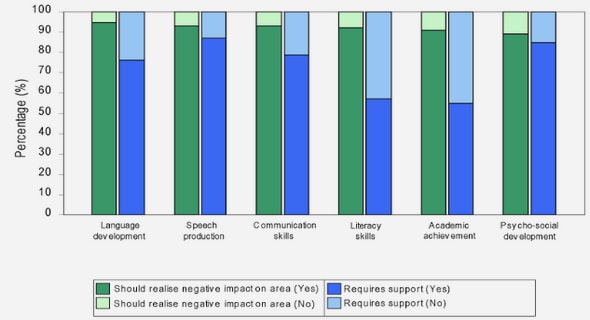(Downloads - 0)
For more info about our services contact : help@bestpfe.com
Table of contents
1 General introduction
2 State of the art
2.1 Nuclear architecture
2.1.1 Components of plant heterochromatin
2.1.2 Arabidopsis model of chromosome organization centered on heterochromatin
2.1.3 Distribution of heterochromatin in the nuclear domain
2.1.4 Dynamics of the heterochromatin compartment during development
2.1.5 Dynamics of the heterochromatin compartment in response to environmental cues
2.1.6 Mechanisms involved in the spatial heterochromatin distribution
2.1.7 Chromosome territories
2.1.8 Recapitulation
2.2 Statistical analysis of spatial point patterns
2.2.1 Classical spatial statistics
2.2.2 Summary statistics
2.2.3 Testing spatial configurations
2.3 Spatial analysis approaches on nuclear architecture
2.3.1 Microscopic imaging
2.3.2 Extraction of the nucleus and its compartments in a three-dimensional image
2.3.3 Quantitative image analysis of nuclear organizations
2.3.4 Analysis of nuclear organizations using spatial statistics
2.4 Motivation of the present work
3 Methods for analyzing spatial object patterns in confined spaces
3.1 Representation of 3D objects and domains
3.2 Spatial statistical descriptors
3.2.1 F-Function
3.2.2 G-Function
3.2.3 H-Function
3.2.4 B-Function
3.2.5 C-Function
3.2.6 Z-Function
3.2.7 Other new spatial statistical descriptors
3.3 Spatial models to decipher spatial configurations
3.3.1 Completely random point process in a 3D domain
3.3.2 3D hardcore random spatial point model
3.3.3 Orbital spatial point model
3.3.4 Orbital 3D spatial objects model
3.3.5 3D maximum repulsion spatial point process
3.3.6 Hardcore 3D territorial spatial model
3.3.7 Orbital 3D territorial spatial model
3.4 Statistical Distribution Index: a statistical tool to test model goodness-of-fit
3.5 Recapitulation of the chapter
4 Results (Part 1): Numerical investigations on methods
4.1 Unbiased testing of spatial models using replicated data
4.2 Characterization of spatial models
4.2.1 Orbital 3D spatial objects patterns
4.2.2 Maximum repulsion spatial objects patterns
4.3 Reproducibility of SDI values
4.4 Robustness of spatial analysis to segmentation errors
4.4.1 CSR objects patterns
4.4.2 Real patterns
4.4.3 Conclusion
4.5 Inter-group comparison using the SDI
4.5.1 Marginal spatial point process
4.5.2 Thomas spatial point pattern
4.5.3 Conclusion
5 Results (Part 2): Spatial analyses of nuclear architecture in A. thaliana
5.1 Image segmentation and quantitative analysis of nuclei and chromocenters
5.1.1 Segmentation of nuclei
5.1.2 Segmentation of chromocenters
5.1.3 Surface extraction
5.1.4 Quantification of nuclear and chromocenters features
5.2 Analysis of A. thaliana wild-type leaf cell nuclei
5.2.1 Analysis of nuclear size and shape
5.2.2 Analysis of heterochromatin features
5.2.3 Testing departure from complete randomness
5.2.4 Analyzing the peripheral organization
5.2.5 Correlation between nuclear features and chromocenters spatial organization
5.2.6 Distinguishing spatial heterogeneity vs interactions between chromocenters
5.2.7 Testing the maximum repulsive organization of chromocenters
5.2.8 Investigating an orbital territorial spatial configuration of chromocenters
5.2.9 Recapitulation
5.3 Characterization of genotypes: crwn and kaku family mutants
5.3.1 Plant materials
5.3.2 The crwn1 and crwn2 mutations have globally similar and additive effects on 3D nuclear size and shape
5.3.3 The crwn1 and crwn2 mutations have opposite and additive effects on constitutive heterochromatin
5.3.4 The crwn mutations impact the relative positioning of chromocenters in the nuclear space
5.3.5 The crwn mutations impact the distance between the chromocenters and the nuclear periphery
5.3.6 kaku mutations predominantly impact nuclear shape in mesophyll leaf cells
5.3.7 Constitutive heterochromatin is affected in kaku mutants
5.3.8 The spatial distribution of chromocenters is not altered in the kaku mutants
5.3.9 Recapitulation
6 General conclusion and discussion
6.1 A. thaliana nuclear architecture: chromocenters organization
6.2 The developed spatial statistical approach
6.2.1 Spatial models
6.2.2 Spatial descriptors
6.2.3 Individual vs population tests of spatial models
6.2.4 Comparison of spatial arrangements between nuclei populations
6.2.5 Genericity
A Appendix
A.1 Other new spatial statistical descriptors
A.1.1 NN-Function
A.1.2 LRD-Function
A.1.3 SRD-Function
A.2 Technical validation of the complete random models at the population level
A.2.1 Complete random spatial point patterns
A.2.2 Hardcore 3D random spatial objects patterns
A.3 Comparison of A. thaliana isolated nuclei populations
A.3.1 Morphological and size evaluation of A. thaliana Col-0 leaf cell nuclei
A.3.2 Parametrization of the heterochromatin in A. thaliana Col-0 leaf cell nuclei
A.3.3 Analysis of the spatial configuration of chromocenters in A. thaliana Col0 leaf cell nuclei


